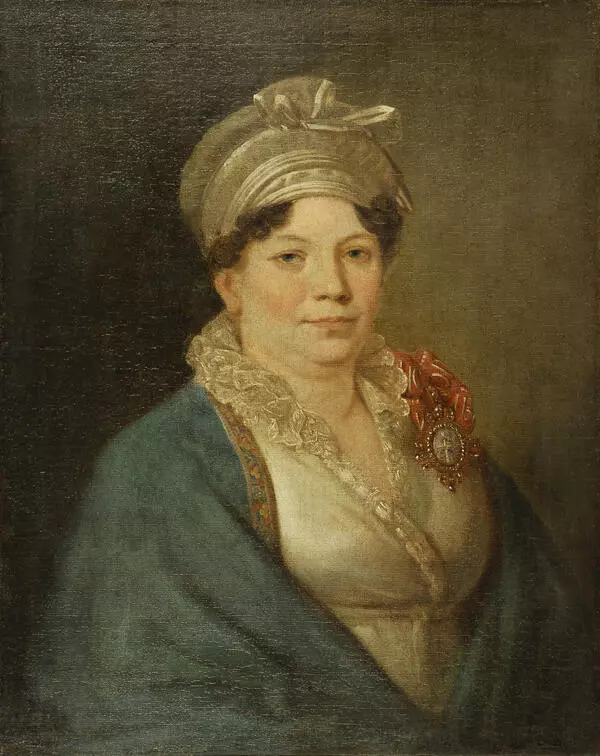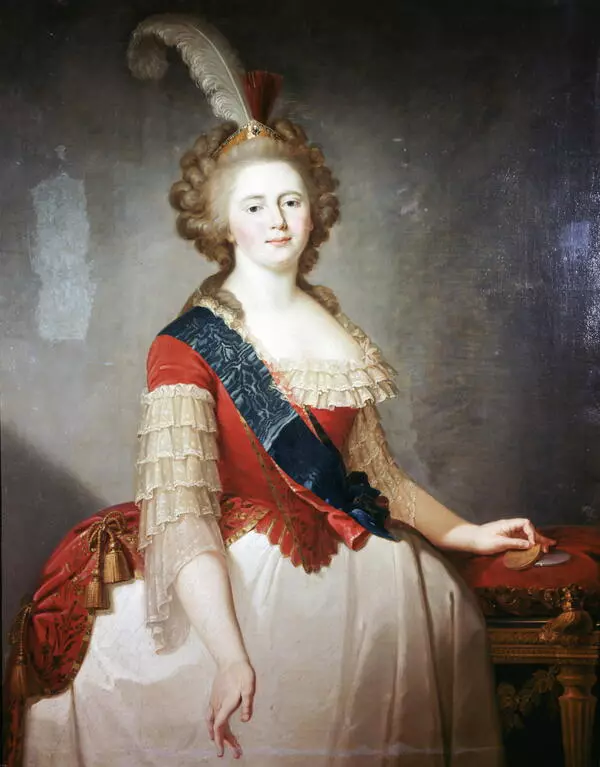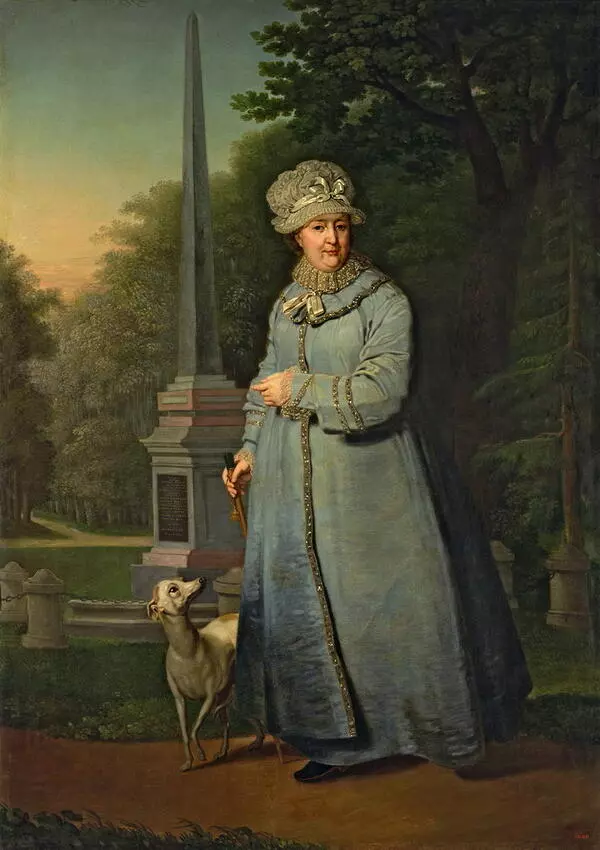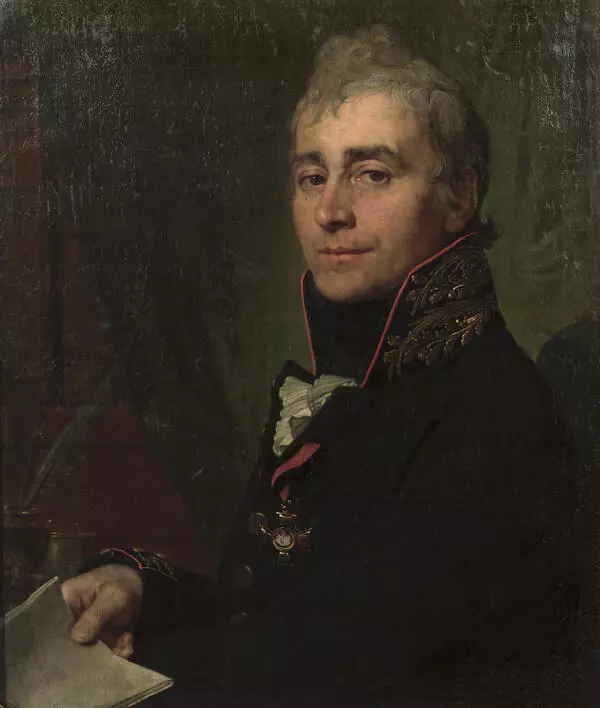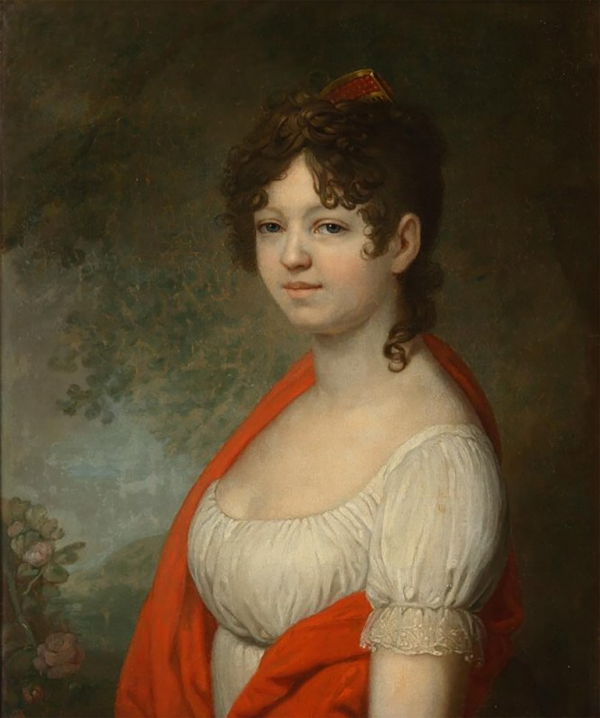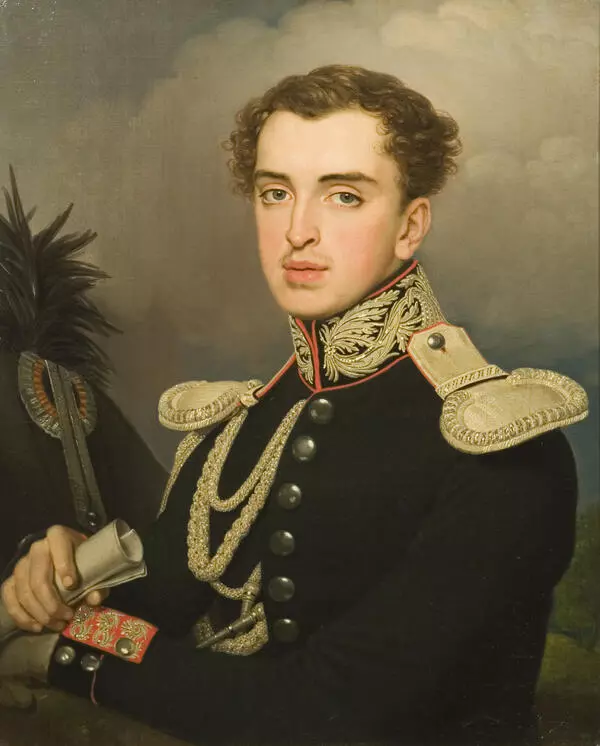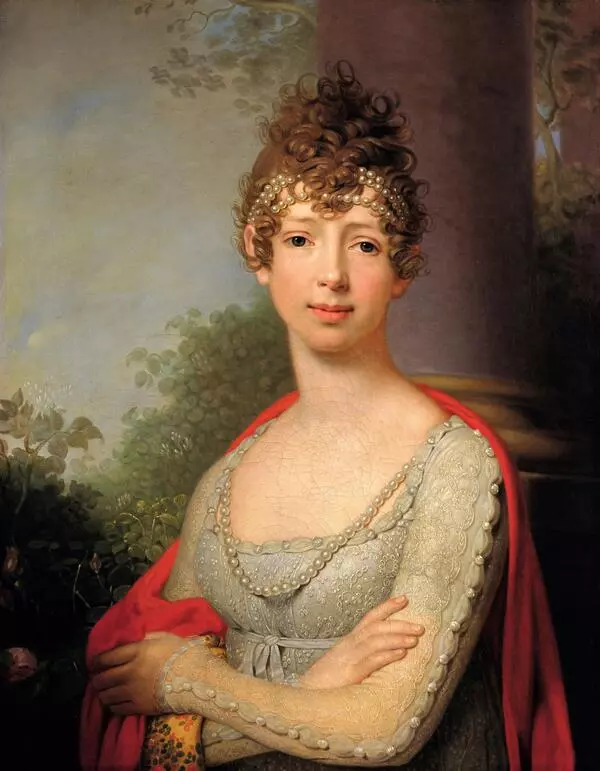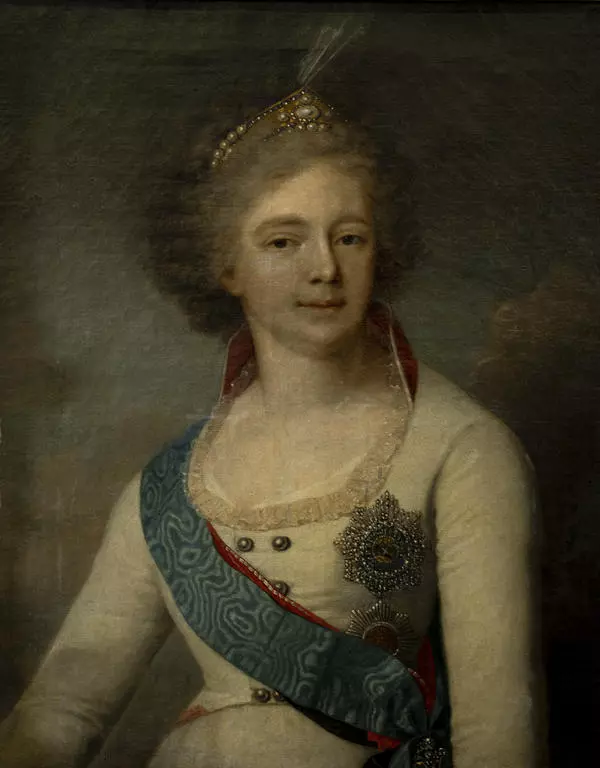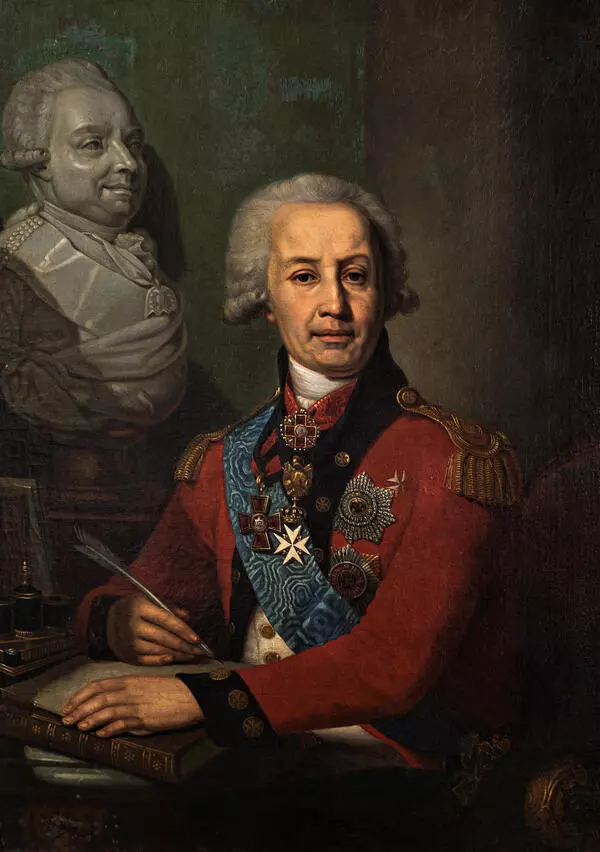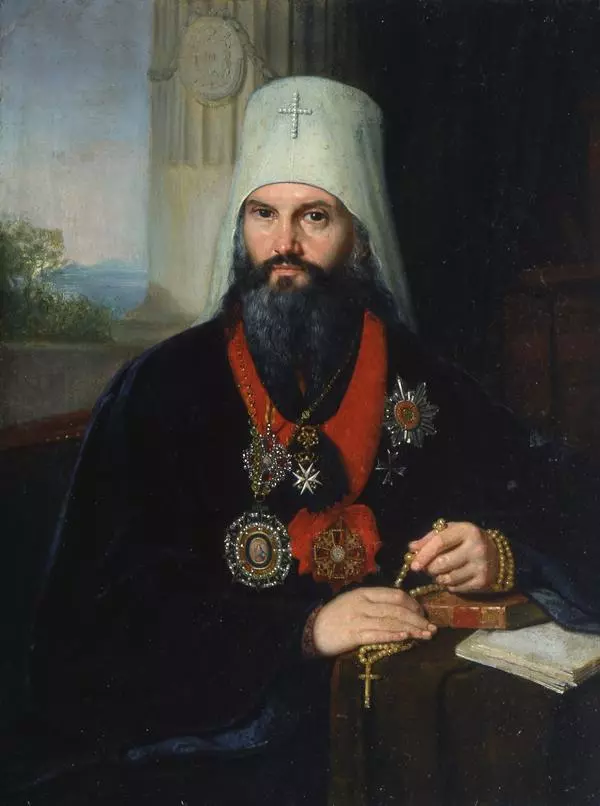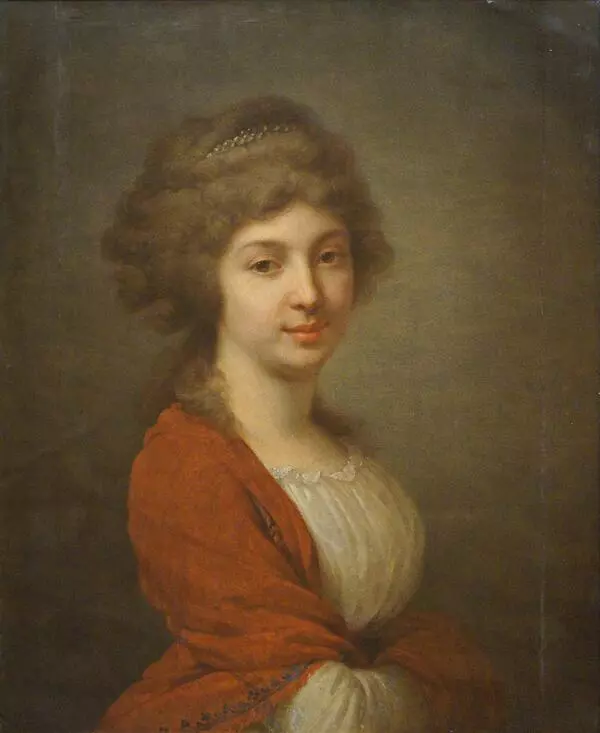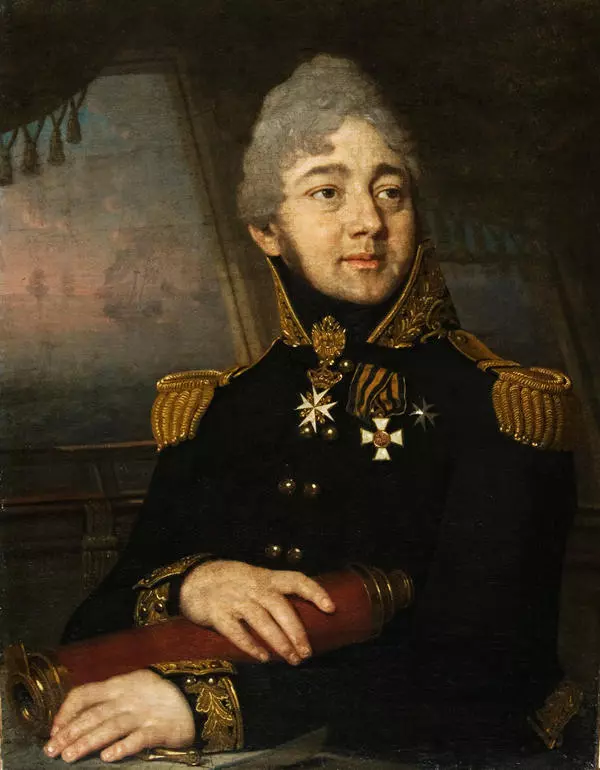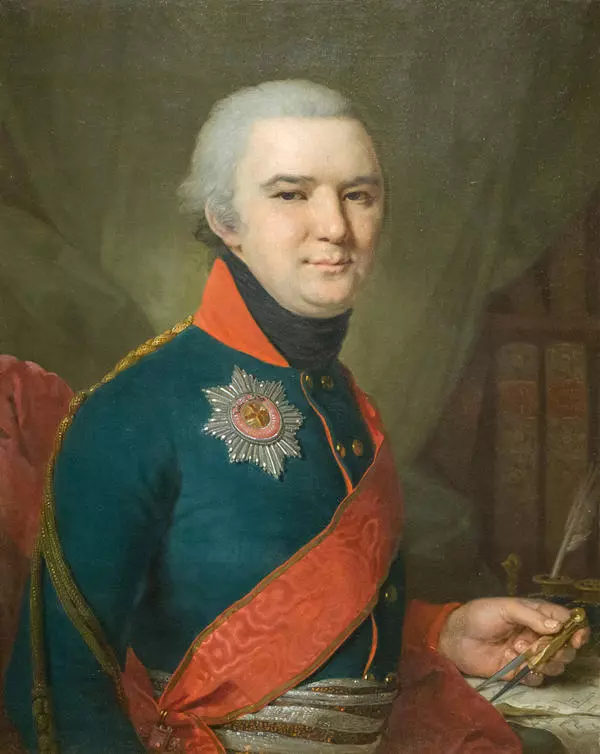The Russian painter Vladimir Lukich Borovikovsky is famous as a portraitist. He was equally good both at full-size and more private intimate portraits.
Borovikovsky’s talent was noticed by Catherine the Great, when in 1787 on her way to the Crimea she stopped at one of en route palaces in Kremenchuk. For her arrival Borovikovsky completed two allegorical paintings with Catherine herself and Peter I as the main characters. The empress liked the painter’s works, and she recommended him to go to Saint Petersburg to study at the Imperial Academy of Arts. Unfortunately, studying at the Academy was impossible for the artist due to his age (by the time Borovikovsky was 31). However, the painter found other ways to perfect his talent and met the painter Dmirty Grigoryevich Levitsky, who became his teacher and mentor.
At the beginning Borovikovsky was ordered to paint icons, but soon he started to work as a portraitist as well. In 1795 he created portraits of grand Prince Konstantin Pavlovich and the public official and a poet Gavrila Romanovich Derzhavin. From that point on Borovikovsky was ordered portraits more and more often.
The peak of his creative activity was in late 1790s — early 1800s. He got a lot of orders and became the pain portraitist of Saint Petersburg’s high society along with Dmitry Levitsky. At that period “Portrait of Murtasa-Kouli-Khan, brother of Persian Shah Agha-Mohammad” was painted.
This painting was commissioned to the painter by Catherine II. The portrait’s model is Murtasa-Kouli-Khan, a prince who was defeated in his fight for the Persian throne. When his brother became a Persian Shah, he asked for asylum in Russia. At the time the Russian Empire supported Murtasa-Kouli-Khan’s candidature pursuing its own political goals. This is why Catherine II welcomed the runaway prince. The Persian guest was very interested in the Hermitage collection, and Catherine, noticed his passion for art, thought fit to commission his portrait to Borovikovsky. In total the painter created three portraits of prince at that period. One of them is kept at the Tver museum, two others are in the Russian museum and the Tretyakov gallery. The portraits are slightly different by the costume details and the background.
Borovikovsky feasted his eyes upon the Eastern prince’s appearance, his pale ivory white face, well-groomed beard, soft hands, rich decorated fabric and jewelry. In such a way an official empress’s commission gave painter an opportunity to work with an interesting model.
Borovikovsky’s talent was noticed by Catherine the Great, when in 1787 on her way to the Crimea she stopped at one of en route palaces in Kremenchuk. For her arrival Borovikovsky completed two allegorical paintings with Catherine herself and Peter I as the main characters. The empress liked the painter’s works, and she recommended him to go to Saint Petersburg to study at the Imperial Academy of Arts. Unfortunately, studying at the Academy was impossible for the artist due to his age (by the time Borovikovsky was 31). However, the painter found other ways to perfect his talent and met the painter Dmirty Grigoryevich Levitsky, who became his teacher and mentor.
At the beginning Borovikovsky was ordered to paint icons, but soon he started to work as a portraitist as well. In 1795 he created portraits of grand Prince Konstantin Pavlovich and the public official and a poet Gavrila Romanovich Derzhavin. From that point on Borovikovsky was ordered portraits more and more often.
The peak of his creative activity was in late 1790s — early 1800s. He got a lot of orders and became the pain portraitist of Saint Petersburg’s high society along with Dmitry Levitsky. At that period “Portrait of Murtasa-Kouli-Khan, brother of Persian Shah Agha-Mohammad” was painted.
This painting was commissioned to the painter by Catherine II. The portrait’s model is Murtasa-Kouli-Khan, a prince who was defeated in his fight for the Persian throne. When his brother became a Persian Shah, he asked for asylum in Russia. At the time the Russian Empire supported Murtasa-Kouli-Khan’s candidature pursuing its own political goals. This is why Catherine II welcomed the runaway prince. The Persian guest was very interested in the Hermitage collection, and Catherine, noticed his passion for art, thought fit to commission his portrait to Borovikovsky. In total the painter created three portraits of prince at that period. One of them is kept at the Tver museum, two others are in the Russian museum and the Tretyakov gallery. The portraits are slightly different by the costume details and the background.
Borovikovsky feasted his eyes upon the Eastern prince’s appearance, his pale ivory white face, well-groomed beard, soft hands, rich decorated fabric and jewelry. In such a way an official empress’s commission gave painter an opportunity to work with an interesting model.


